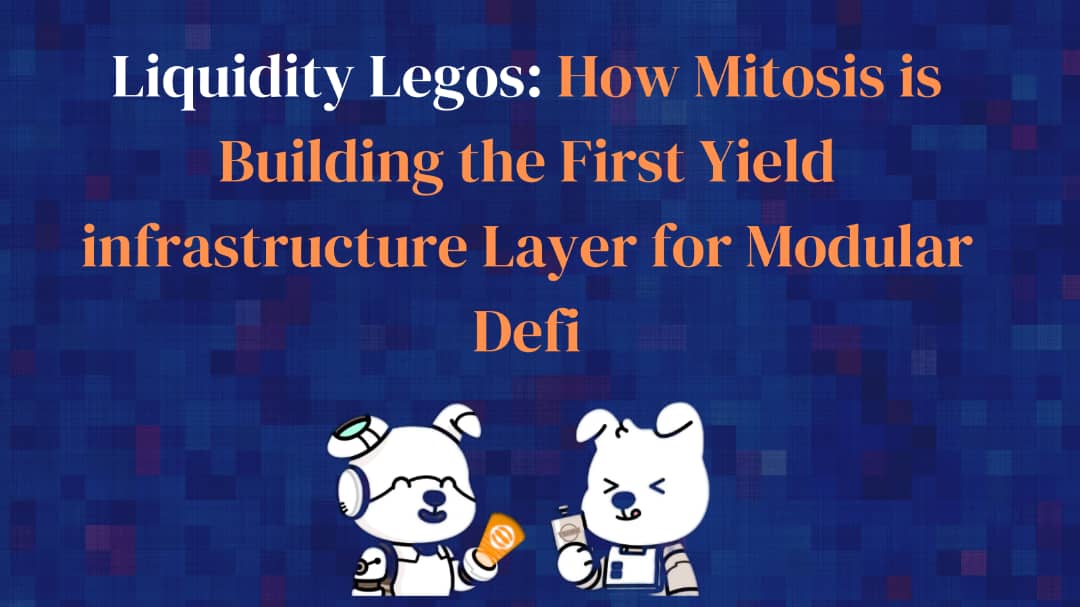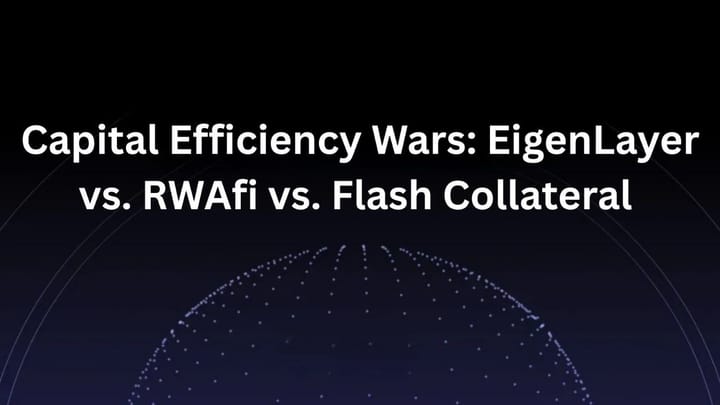Liquidity Legos: How Mitosis is Building the First Yield Infrastructure Layer for Modular DeFi

Introduction
DeFi is evolving beyond isolated protocols into a modular ecosystem, one where specialized layers handle execution, data, bridging, and now, liquidity. As the stack matures, a critical gap remains: an infrastructure layer purpose-built to abstract, route, and optimize yield across chains.
Mitosis steps into this void as the first yield infrastructure layer not just a vault protocol or bridge aggregator, but a foundational middleware that lets any protocol access deep, cross-chain liquidity with composable primitives and automated intelligence. In the same way that rollups scale Ethereum or oracles stream price data, Mitosis delivers yield as a service layer programmable, portable, and persistent.
This article explores how Mitosis introduces a new class of "liquidity legos" that plug into the modular DeFi stack, transforming how capital is deployed, routed, and composed.
1.0. Mitosis as a Yield Infrastructure Layer
In today’s DeFi landscape, yield is fragmented. LPs must choose between ecosystems, vaults, and chains often locking into siloed systems with short-lived incentives. Protocols, in turn, struggle to attract sustainable liquidity without costly emissions or centralized market makers.
Mitosis abstracts this away through its infrastructure-first design:
- Interchain Liquidity Layer: Liquidity deposited into Mitosis isn’t bound to one chain or protocol. Instead, it enters a unified layer where vaults dynamically rebalance capital across opportunities in real time.
- Composable miAssets and maAssets: These wrapped tokens represent ownership and strategy-specific positions, allowing protocols to compose with them as inputs in lending markets, collateral systems, or governance tools.
- Routing Intelligence: The Mitosis matrix vault system uses algorithmic rebalancing to send capital where it’s needed most, based on real-time yield metrics and ecosystem demand not governance bribes or short-term hype.
This approach turns yield from a passive reward into an active, programmable layer that any protocol can integrate with directly.
2.0. Liquidity as Code: Breaking the Silo Mentality
Think of Mitosis as the liquidity operating system (LiqOS) for DeFi. Just as operating systems abstract hardware complexity into usable environments for applications, Mitosis abstracts yield management into an environment that protocols can build on without reinventing infrastructure.
Key features of this "LiqOS" include:
- Modular Vault SDKs: Developers can spin up new strategies or plug into existing ones using Mitosis’s secure, gas-efficient infrastructure.
- Universal Liquidity Access: Capital is no longer “trapped” in pools. With interchain routing and unified vault logic, liquidity flows where it delivers the most value.
- Asset Abstraction Layer: Through miAssets and maAssets, Mitosis provides a fungible interface for previously illiquid or protocol-bound LP positions.
This composability mirrors the benefits of modular execution chains—Mitosis provides liquidity logic as a backend layer, while front-end protocols and apps consume it via API-like vaults.
3.0. Bringing Composability Back to DeFi
The term "money legos" was once the hallmark of DeFi’s early days. But over time, siloed liquidity, bespoke integrations, and chain tribalism fractured that vision. Mitosis restores it by enabling deep composability at the liquidity layer.
Protocols can:
- Launch new yield strategies by composing with existing vaults.
- Offer cross-chain staking products without managing bridges or relayers.
- Integrate with Matrix vaults for automatic capital routing.
- Use miAssets/maAssets in their own governance or collateral systems.
This means protocols are no longer forced to build liquidity from scratch. Instead, they plug into the Mitosis layer just as an L2 might plug into an Ethereum sequencer or a dApp pulls price feeds from Chainlink.
4.0. Why Infrastructure Matters for Yield
Yield isn’t just about APYs, it’s about capital efficiency, risk optimization, and ecosystem alignment. By building infrastructure, not just products, Mitosis enables:
- Sustainable Liquidity Loops: LPs become stakeholders, not speculators, through governance and transparent flows.
- Frictionless UX: Users deposit once and access cross-chain yield without complex rebalancing or bridging.
- Protocol-Level Alignment: Builders access liquidity on-demand without needing unsustainable incentives or liquidity mining schemes.
This is how DeFi scales not by duplicating yield farms across every chain, but by creating shared infrastructure for programmable, persistent liquidity.
Conclusion: Mitosis and the Future of Modular DeFi
The next wave of DeFi belongs to protocols that think in layers, those that build infrastructure that can be reused, composed, and scaled across chains. Mitosis isn’t another vault project; it’s the first yield infrastructure layer in crypto. One that abstracts away the headaches of liquidity fragmentation and brings programmable yield to any protocol, anywhere.
By offering liquidity legos for the modular age, Mitosis changes the game for LPs, protocols, and developers alike. Capital becomes portable. Yield becomes a service. And composability becomes reality again.
In the modular DeFi stack of the future, execution may live on rollups, identity on zk layers, and data on oracles but yield will flow through Mitosis.
Are you ready to be part Mitosis Community?


Comments ()